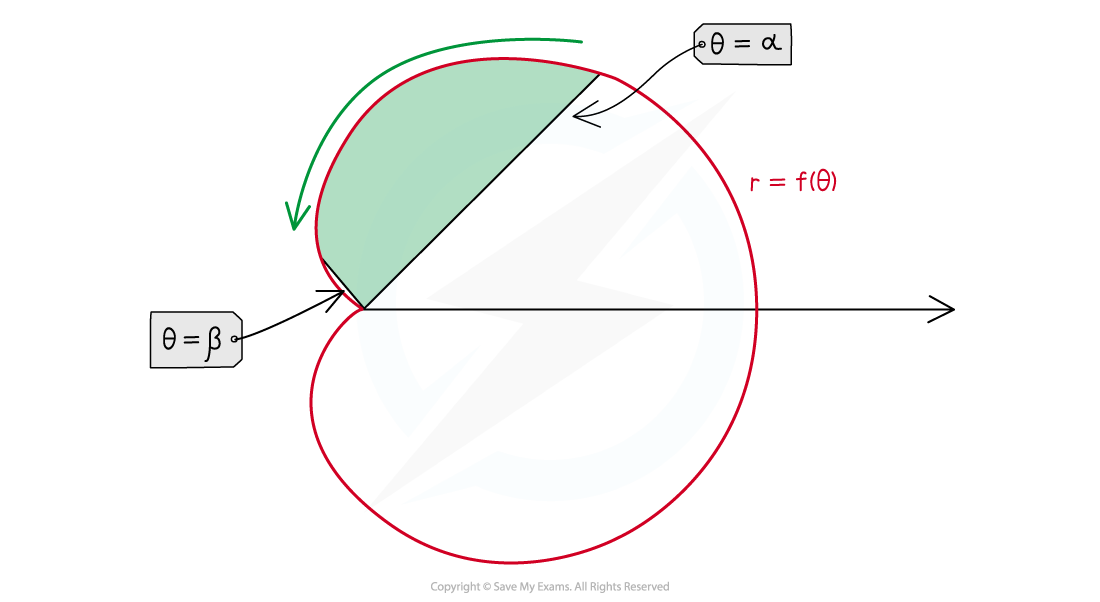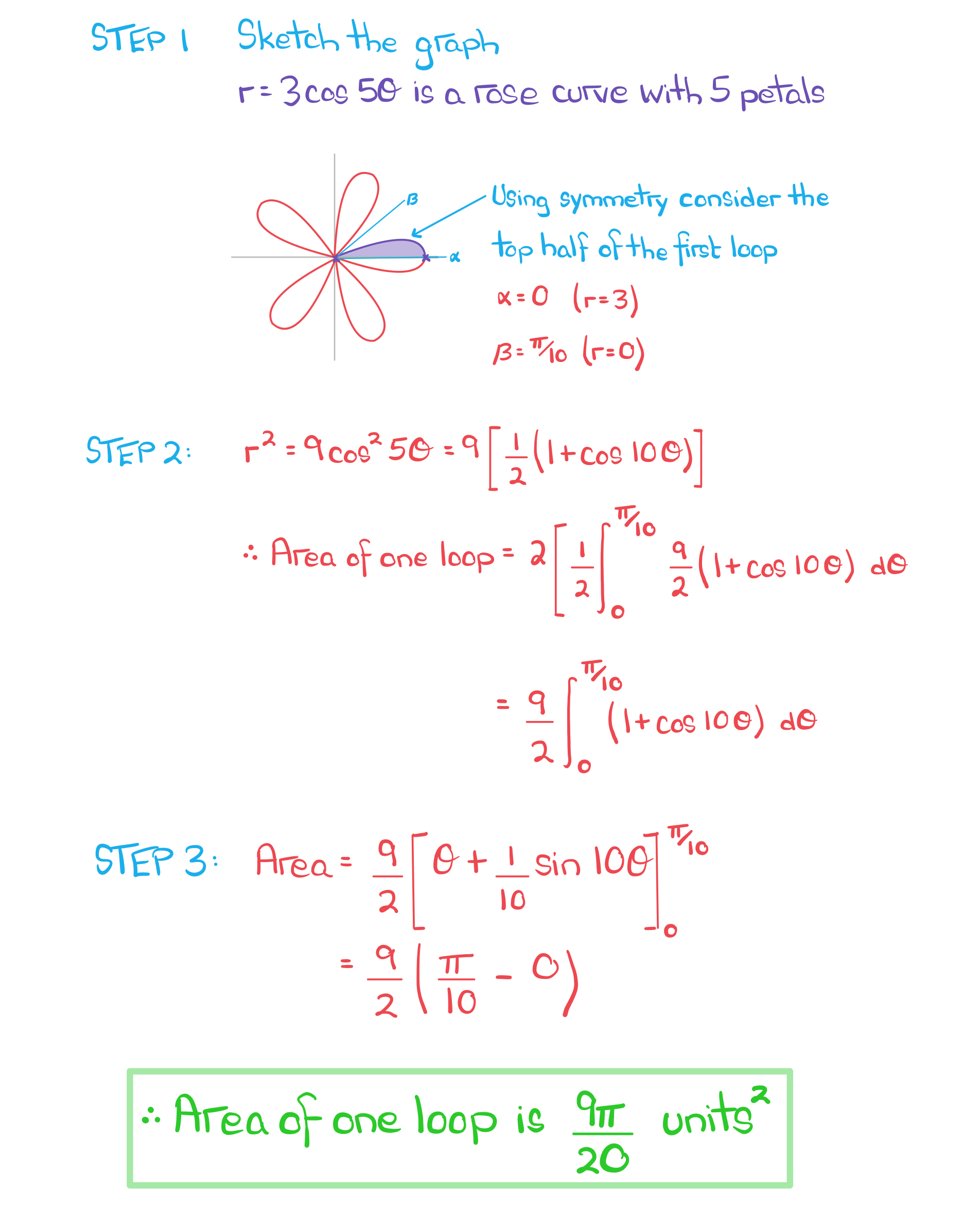Finding Tangents to Polar Curves
What is the gradient/tangent of a polar curve?
- Gradients (and tangents) are the same as using Cartesian coordinates
- i.e. a gradient of 1 in Cartesian coordinates is still a gradient of 1 in polar coordinates
- a 45° line from “bottom left” to “top right” is a gradient of 1 in both systems
- the equation of a tangent to a polar curve should be written in polar form
How do I find the tangents to a polar curve?
-
Finding the gradient - and so the equation of a tangent - to a polar curve is based on parametric differentiation in Cartesian form
-
Since
,
and
, it follows that
- Then, using parametirc differentiation the gradient is given by
- From which the Cartesian equation can be found
- Which can then be converted into polar form using
and
How do I find horizontal and vertical tangents to a polar curve?
- Many questions only concern tangents that are horizontal and/or vertical to the curve
- Horizontal tangents are described as being “parallel to the initial line”
- Horizontal tangents occur where
- Horizontal tangents occur where
- Vertical tangents are described as being “perpendicular to the initial line”
- Vertical tangents occur where
- Vertical tangents occur where
- Questions require finding the coordinates of points that have horizontal or vertical tangents (rather than finding the equations of the tangents)
- Coordinates should be in polar form, i.e.
- Coordinates should be in polar form, i.e.
- In some cases, both
and
at a particular point
- Under these cases the polar curve has a cusp
- But vice versa is not necessarily true
- A polar curve with a cusp does not necessarily mean
and
- A polar curve with a cusp does not necessarily mean
Exam Tip
- If not provided, sketch the graph of the polar curve
- This will help you to spot how many horizontal/vertical tangents there are
- You could use a graphical calculator to help you do this
Worked example
A sketch of the polar curve , with equation
, where
is shown below.

Find the coordinates of the points on where the tangents are (i) parallel, (ii) perpendicular to the initial line, giving values to 2 significant figures where appropriate.









